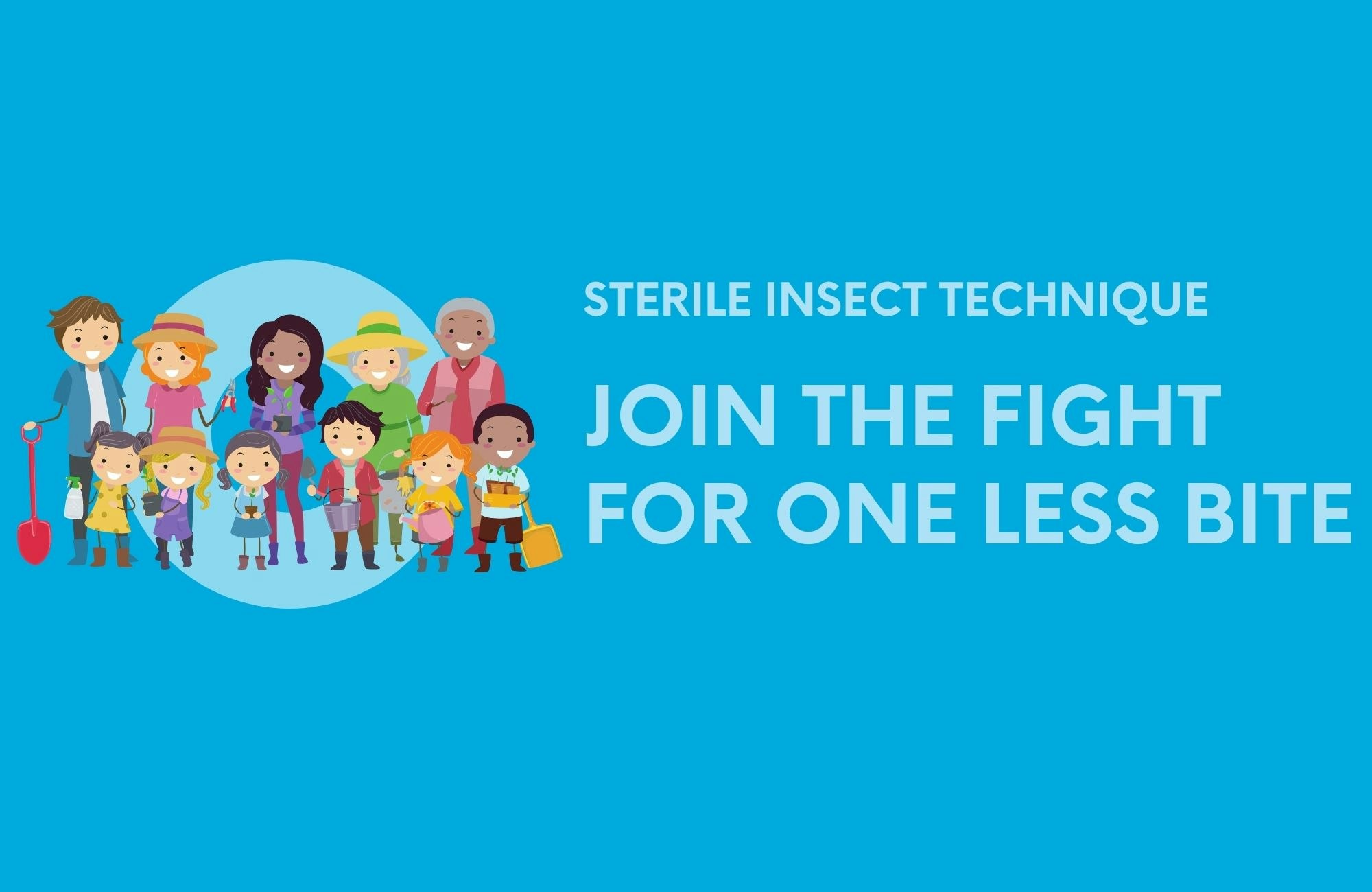Sterile Insect Technique (SIT)
Join the Fight For One Less Bite

Mosquito control uses many tools to reduce mosquito-borne disease threats, but they can't do it alone. Mosquito control also needs your help to keep your home bite-free. Join the fight for one less bite by:
- Tipping out stagnant water weekly
- Tossing any unused containers
- Protecting yourself with repellent
Sterile Insect Technique or Techniques (SIT) is one tool used by mosquito control to reduce insects that can spread diseases, including some types of mosquitoes. The technology has been used since the 1950s, but in the United States, SIT for mosquito control is relatively new.
Sterile Insect Technique is just one tool in a holistic, integrated vector management plan
SITs have been used in the United States and around the world since the 1950s to control insect pests. For example, SITs have been used to control Mediterranean fruit fly (Medfly) in Southern California since the 1990s. SIT was also used to eradicate screwworm flies in North and Central America.
Download overview of USDA screwworm control program (PDF)
Sterile Insect Technique in the San Gabriel Valley

The San Gabriel Valley Mosquito & Vector Control District supports the evaluation and research of SIT. Federal and State regulatory agencies will determine the safety of innovative approaches in California. Our agency may evaluate the use of these technologies only after they have been approved.
Currently, no mosquitoes are being released using SIT in the San Gabriel Valley.
How does it work?
SIT targets specific types or species of mosquitoes (such as Aedes aegypti or Aedes albopictus). Generally, SITs for mosquitoes involve three steps: mass production of mosquitoes, sorting males from females, then mass release of male mosquitoes into an area. These steps may differ depending on the type of SIT.
Male mosquitoes do not bite. Male mosquitoes do not spread diseases.
To be successful, the male SIT mosquitoes released into an area must largely outnumber wild male mosquitoes. Once released, male mosquitoes mate with wild females, and because of sterility, no offspring are produced. Over time, the numbers of the targeted mosquito species in the area are reduced.
SIT mosquitoes cannot reproduce in the wild. Therefore, once SIT male mosquitoes stop being released into an area, the specific species of mosquito being targeted will, over time, return to normal.
Male mosquitoes do not bite people or animals. They feed on nectar. Therefore, people living in the release area will not be bitten more than usual.
SITs for mosquito control can be used as part of an integrated vector management approach. SIT may be a preferred way to reduce numbers of mosquitoes in areas where use of insecticides is not possible or where insecticide-resistance has reduced the effectiveness of insecticides.
There are three major types of techniques that can have a sterilizing effect on specific mosquito species.


